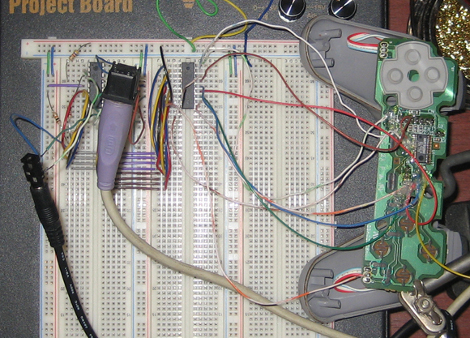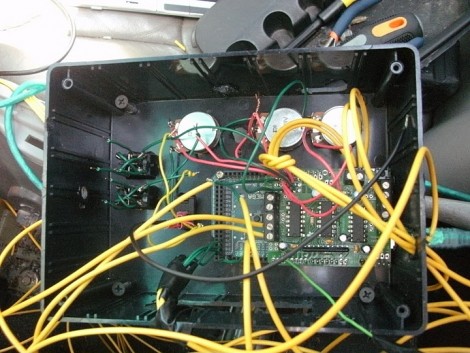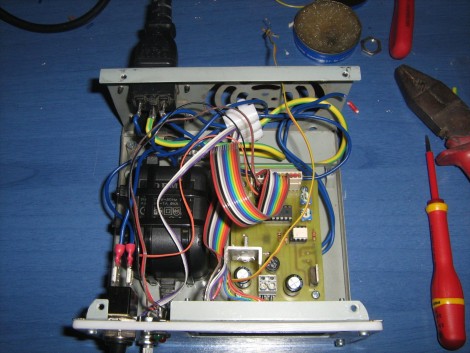[vimeo=http://vimeo.com/9661763]
[Robb Godshaw] put together a pencil production line for home use. The whimsical assembly line starts with a graphite rod and extrudes clay polymer around it. From there it’s down a conveyor belt to get stamped and then into the oven made from a hacked toaster. The final step is to cut out a plug of eraser and attach it to the back-end of the pencil. This low-speed assembly line reminds us of a Rube Goldberg machine with all the wasteful steps cut out.















